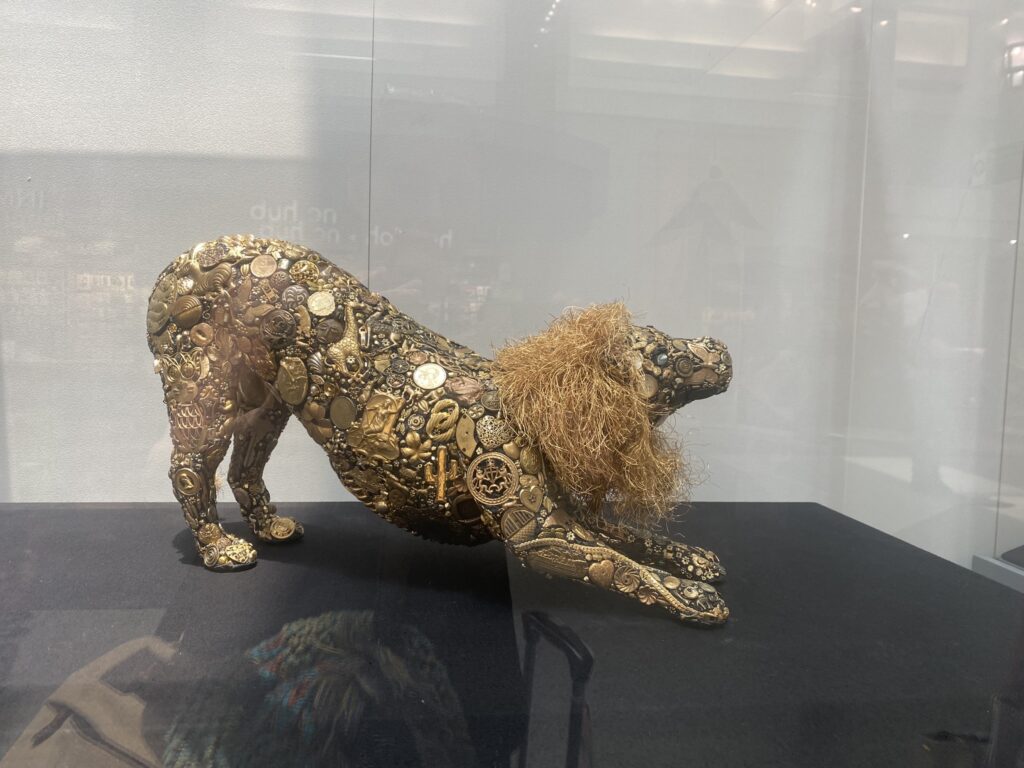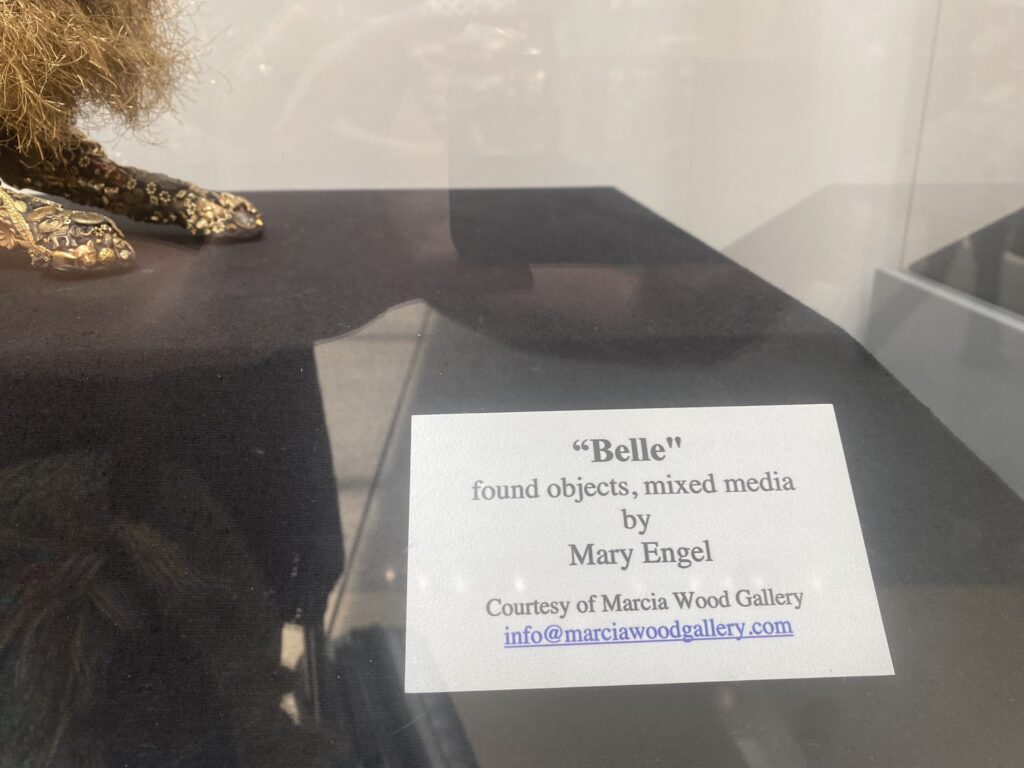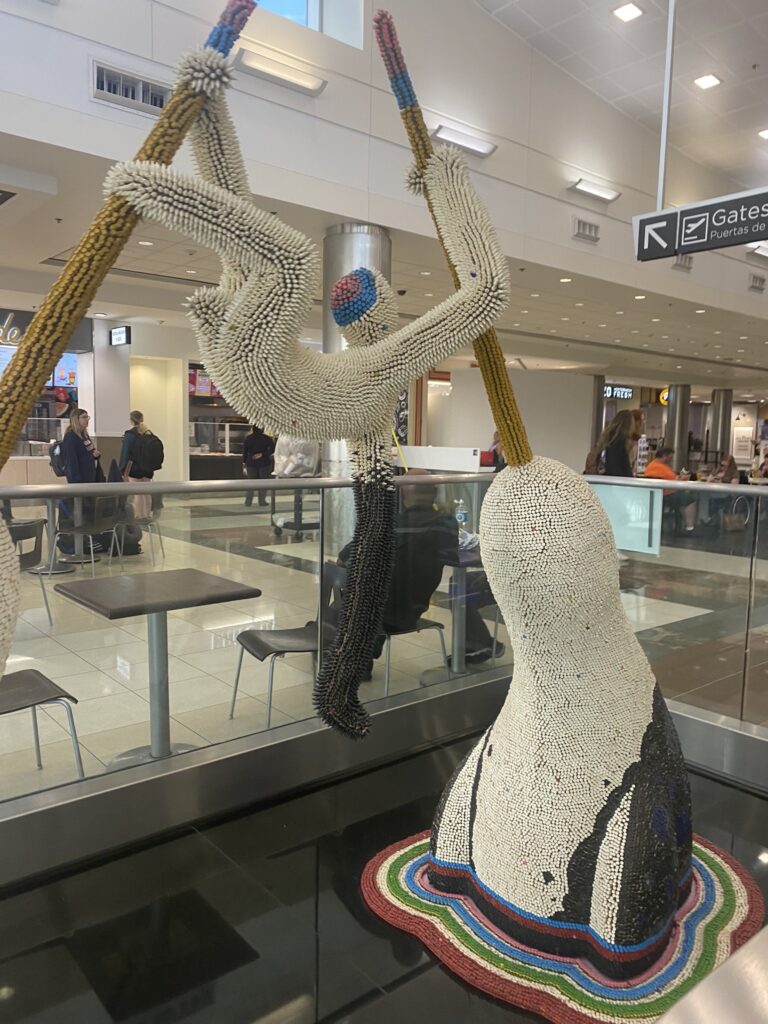The artwork featured in this blog was displayed at the Atlanta International Airport, capturing the attention of travelers and engaging them through a diverse and captivating array of artistic expressions. By incorporating art into the airport environment, the installation not only enhanced the aesthetic appeal of the terminal but also provided passengers with a unique cultural experience as they passed through one of the busiest airports in the world. This initiative aimed to enrich the journey of travellers by offering moments of reflection, inspiration, and connection through the power of art.
Art has long been an essential part of the human experience, offering a universal language that transcends cultural and linguistic barriers. From ancient cave paintings to modern installations, art captures our imagination and reflects our emotions. It is no wonder, then, that art is increasingly recognized as a potent form of therapy. Art therapy is a unique blend of psychology and creativity, offering individuals a powerful tool for self-expression, emotional release, and healing.

The Importance of Art in Our Lives
Art engages our senses, evokes emotions, and provides a medium through which we can express complex feelings that might otherwise be difficult to articulate. When we look at a beautiful painting, listen to a moving piece of music, or touch a sculpture, we often experience a sense of wonder, inspiration, and connection. This is because art stimulates our brain’s pleasure centers, releasing dopamine, a chemical associated with feelings of happiness and satisfaction . This explains why art can make us feel good and why it plays such a crucial role in our emotional well-being.
What is Art Therapy?
Art therapy is a form of psychotherapy that uses art as a means of communication. Unlike traditional therapy, which relies primarily on verbal communication, art therapy harnesses the creative process to explore emotions, resolve conflicts, and foster personal growth. It is especially beneficial for individuals who find it challenging to express their thoughts and feelings through words. Art therapy can be used to address a wide range of psychological issues, including anxiety, depression, trauma, and grief .
Art therapy encompasses various forms of artistic expression, each offering unique therapeutic benefits. Painting and drawing are perhaps the most common forms, allowing individuals to visualize their emotions and experiences on paper. Sculpture and ceramics offer a tactile experience, engaging the sense of touch and encouraging mindfulness and focus. Other forms of art therapy include photography, collage, digital art, and even dance and movement therapy . Each modality provides different avenues for expression and healing, making art therapy a versatile and adaptable form of treatment.


The History of Art Therapy
The formal practice of art therapy began in the mid-20th century, although the therapeutic use of art dates back centuries. In the aftermath of World War II, therapists began to recognize the potential of art to help soldiers cope with trauma. Artists like Adrian Hill, who discovered the therapeutic benefits of drawing while recovering from tuberculosis, played a pivotal role in developing art therapy as a recognized field . Today, art therapy is practiced worldwide, helping individuals of all ages and backgrounds to overcome psychological challenges and improve their quality of life.
Who Can Benefit from Art Therapy?
Art therapy is a versatile and inclusive form of treatment that can benefit a diverse range of individuals. Children, who often struggle to express themselves verbally, can use art therapy to process their feelings and experiences. Adults dealing with stress, anxiety, depression, or trauma can find relief and insight through artistic expression. Art therapy is also used in hospitals and care facilities to support patients coping with chronic illness, pain, or the challenges of aging . Furthermore, art therapy can foster community and connection in group settings, providing a shared space for individuals to express themselves and support one another.
The Benefits of Art Therapy on Mental and Physical Health
Art therapy offers numerous benefits for mental health. By providing a safe space for self-expression, it helps individuals explore and understand their emotions, reducing feelings of stress and anxiety. The creative process can also boost self-esteem, promote problem-solving skills, and encourage personal insight and growth. Moreover, art therapy can complement traditional therapeutic approaches, offering a holistic and integrative path to mental well-being .
The benefits of art therapy are not limited to mental health. Engaging in artistic activities can also have positive effects on physical health. The relaxation and mindfulness fostered by creative expression can reduce stress, lower blood pressure, and improve overall well-being. For individuals with chronic pain or illness, art therapy can provide a sense of control and empowerment, improving their quality of life and resilience .

Conclusion
Art therapy is a powerful and transformative practice that harnesses the healing potential of creativity. By engaging our senses, emotions, and imagination, art therapy offers a unique pathway to emotional and physical well-being. Whether through painting, drawing, sculpture, or movement, art therapy provides a valuable outlet for self-expression and healing, helping individuals navigate the complexities of life with greater resilience and insight. As we continue to explore the therapeutic potential of art, we open the door to new possibilities for personal growth and healing, enriching our lives and our communities.
Love Life x
References
- The Healing Power of Art & Artists – Art as Healing. Retrieved from The Healing Power of Art & Artists.
- American Art Therapy Association – What is Art Therapy? Retrieved from American Art Therapy Association.
- Verywell Mind – What is Art Therapy? Retrieved from Verywell Mind.
- Psychology Today – Art Therapy. Retrieved from Psychology Today.
- Medical News Today – What is Art Therapy? Retrieved from Medical News Today.
- National Institute of Health – The Arts and Health: A Research-Based Approach. Retrieved from NIH.
- The British Association of Art Therapists – Art Therapy. Retrieved from BAAT.
- Harvard Health Publishing – Healing arts: The growing role of art therapy in medicine. Retrieved from Harvard Health.

